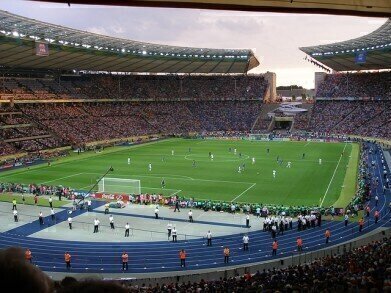Environmental Laboratory
How Does the World Cup Impact the Environment?
Jun 12 2018
The World Cup is labelled by many as the greatest show on Earth. And rightly so. It’s the biggest event for the most popular spectator sport in the world. But with all the ecstasy, agony and edge-of-your-seat action, the environment is hardly at the front of people’s minds.
That said, there is plenty to be considered for the environmental ups and downs of the pinnacle of international football. Read on as we look at the environmental impact of the World Cup.
Germany sets the example
Over the past 15 years or so, a number of sporting events have tried to market their sustainability. It’s no surprise. As we’ve become more aware of climate change and the need for sustainability, promoting a green ethos to a world cup can only boost a potential host country’s bid.
But it’s incredibly difficult to keep up with that sustainable attitude when most World Cup hosts are required to build multiple stadiums in the space of less than a decade.
Germany’s 2006 effort was arguably a stand-out success with free public transport for fans, free bicycle parking and multiple stadiums using solar power and rainwater collection. That, combined with a relatively short distance for fans to travel between games and FIFA’s carbon offsetting programme, resulted in the first ever carbon neutral World Cup.
The not so green cup
Unfortunately, that wasn’t an example other countries could match. Four years later, the South Africa world cup accounted for eight times the emissions of Germany’s.
In Brazil (2014), FIFA invested in solar panels, water conservation and waste reduction among other initiatives around the 12 World Cup stadia. However, critics have suggested that there was no effort to tackle the impact on the rest of the country during the “Copa Verde” – or, Green Cup.
The 2018 World Cup, held in Russia, was the first world cup subject to FIFA’s new green certification requirements for stadia. And, yes, the 12 stadia used less energy and water, and were built with reduced impact on the environment.
At the same time, however, FIFA’s carbon offsetting scheme was called into question, with a study suggesting that only 7% of its emissions reductions were likely to deliver real, measurable results. Find out more about pollution measurement in the article ‘New Wide-Ranging Particulate Sensor’.
2022 and beyond
Looking to the future, Qatar has announced that the 2022 World Cup will be carbon-neutral. Qatari officials aim to reduce water and electricity consumption, along with total carbon emissions, before the beginning of the tournament. Already, however, the carbon-neutrality of their stadia has been called into question.
Will the claims of carbon-neutrality materialise? Like the eventual outcome of the World Cup itself, it seems only time will tell.
Digital Edition
AET 28.2 April/May 2024
May 2024
Business News - Teledyne Marine expands with the acquisition of Valeport - Signal partners with gas analysis experts in Korea Air Monitoring - Continuous Fine Particulate Emission Monitor...
View all digital editions
Events
Jul 30 2024 Jakarta, Indonesia
China Energy Summit & Exhibition
Jul 31 2024 Beijing, China
2024 Beijing International Coal & Mining Exhibition
Aug 07 2024 Beijing, China
IWA World Water Congress & Exhibition
Aug 11 2024 Toronto, Canada
Aug 25 2024 Stockholm, Sweden and online









.jpg)








